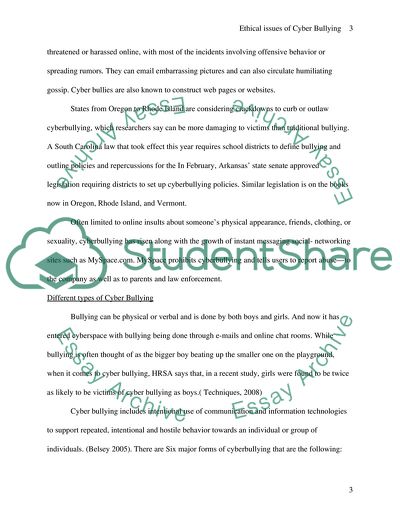Cite this document
(Ethical issues of Cyber Bullying Research Paper, n.d.)
Ethical issues of Cyber Bullying Research Paper. https://studentshare.org/ethics/1712273-ethical-issues-of-cyber-bullying
Ethical issues of Cyber Bullying Research Paper. https://studentshare.org/ethics/1712273-ethical-issues-of-cyber-bullying
(Ethical Issues of Cyber Bullying Research Paper)
Ethical Issues of Cyber Bullying Research Paper. https://studentshare.org/ethics/1712273-ethical-issues-of-cyber-bullying.
Ethical Issues of Cyber Bullying Research Paper. https://studentshare.org/ethics/1712273-ethical-issues-of-cyber-bullying.
“Ethical Issues of Cyber Bullying Research Paper”. https://studentshare.org/ethics/1712273-ethical-issues-of-cyber-bullying.


